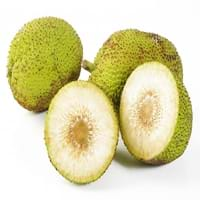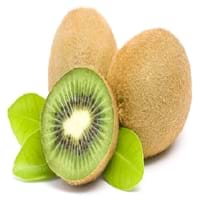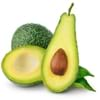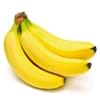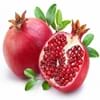Health Benefits
Cancer prevention, Heart care, Maintains healthy cholesterol level, Treatment of skin Diseases
Asthma treatment, Heart care, Prevents constipation, Treatment of skin Diseases
General Benefits
Boosts immune system, Digestive aid, Helps in weight loss, Maintains healthy cholesterol level
Boosts immune system, Controls blood pressure, Eye care, Helps in weight loss
Skin Benefits
Anti-aging benefits, Skin rejuvenation, Treatment of skin diseases
Brightens and lightens complexion, Heals sunburn, Reduces wrinkles, Skin rejuvenation, Treatment of acne, Treatment of dark spots, Treatment of skin diseases
Hair Benefits
Protects hair, Regulates hair growth, Treatment of dandruff
Prevents hair loss, Promotes longer and healthier hair, Treatment of dandruff
Allergy Symptoms
Hives, Inflammation of nose, Swelling of mouth, tongue or lips
Abdominal pains, Anaphylaxis, Breathing difficulty, Itching in tongue and other parts of mouth, Itching sensation in throat, Swelling of mouth, tongue or lips, Vomiting
Side Effects
Allergic reaction
Allergic reaction, Diarrhoea, Skin rash, Possibly unsafe during pregnancy
Best Time to Eat
Along with meal, As a snack in the late afternoon, Don't consume at night and before bed, Don't eat after meal
Any time except an hour after meal, Don't consume at night and before bed
Vitamin B5 (Pantothenic Acid)
Vitamin C (Ascorbic Acid)
Vitamin K (Phyllochinone)
Calories in Fresh Fruit with Peel
Not Available
Calories in Fresh Fruit without Peel
Not Available
Calories in Frozen Form
Not Available
Not Available
Calories in Dried Form
Not Available
Calories in Canned Form
Not Available
Calories in Jam
Not Available
Type
Fruit vegetable, Tropical
Tropical
Season
All seasons
Spring, Summer, Winter
Varieties
Koqo, Tamaikora, Temaipo, Uto Kuro, Samoa, Buco Ni Viti and Kulu Dina
Zhong Hua, Jing Li, Ruan Zao, Mao Hua and Huang Yan
Color
White, Yellow
Brown, Green
Taste
Bland
Sour-Sweet, Tangy
Origin
South Pacific
China
Soil Type
Loam, Sand, Sandy loam, Well-drained
Well-drained
Climatic Conditions
Humid, Rainfall, Warm
Cold, Sunny
Facts about
- The milky sap of breadfruit tree is used as glue & bark is used to make papers.
- Breadfruit tree produces 1st fruit after 2-3 years from planting & remains productive for decades.
- The seeds of breadfruit are edible.
- The name Kiwi is due to the resemblance with 'Kiwi' bird.
- Animals like monkeys and deer also consume Kiwifruit.
- Originated in china, this fruit is also called as 'Chinese gooseberry.'
Top Producer
Jamaica
Italy
Other Countries
Africa, India, United States of America
Chile, France, Greece, Iran, Japan, New Zealand, Portugal, Turkey, United States of America
Top Importer
United States of America
United States of America
Top Exporter
Jamaica
New Zealand
Botanical Name
Artocarpus altilis
Actinidia deliciosa
Synonym
Artocarpus communis or Artocarpus incisa
Not Available
Subkingdom
Tracheobionta
Tracheobionta
Division
Magnoliophyta
Magnoliophyta
Class
Magnoliopsida
Magnoliopsida
Subclass
Magnollidae
Dillenhidae
Family
Moraceae
Actinidiaceae
Genus
Artocarpus
Actinidia
Species
A. altilis
A. deliciosa
Generic Group
Mulberry
Kiwi
Difference Between Breadfruit and Green Kiwi
We might think that Breadfruit and Green Kiwi are similar with respect to nutritional value and health benefits. But the nutrient content of both fruits is different. Breadfruit and Green Kiwi Facts such as their taste, shape, color, and size are also distinct. The difference between Breadfruit and Green Kiwi is explained here.
The amount of calories in 100 gm of fresh Breadfruit and Green Kiwi with peel is Not Available and 61.00 kcal and the amount of calories without peel is 103.00 kcal and Not Available respectively. Thus, Breadfruit and Green Kiwi belong to and category.These fruits might or might not differ with respect to their scientific classification. The order of Breadfruit and Green Kiwi is Rosales and Ericales respectively. Breadfruit belongs to Moraceae family and Green Kiwi belongs to Actinidiaceae family. Breadfruit belongs to Artocarpus genus of A. altilis species and Green Kiwi belongs to Actinidia genus of A. deliciosa species. Beings plants, both fruits belong to Plantae Kingdom.
